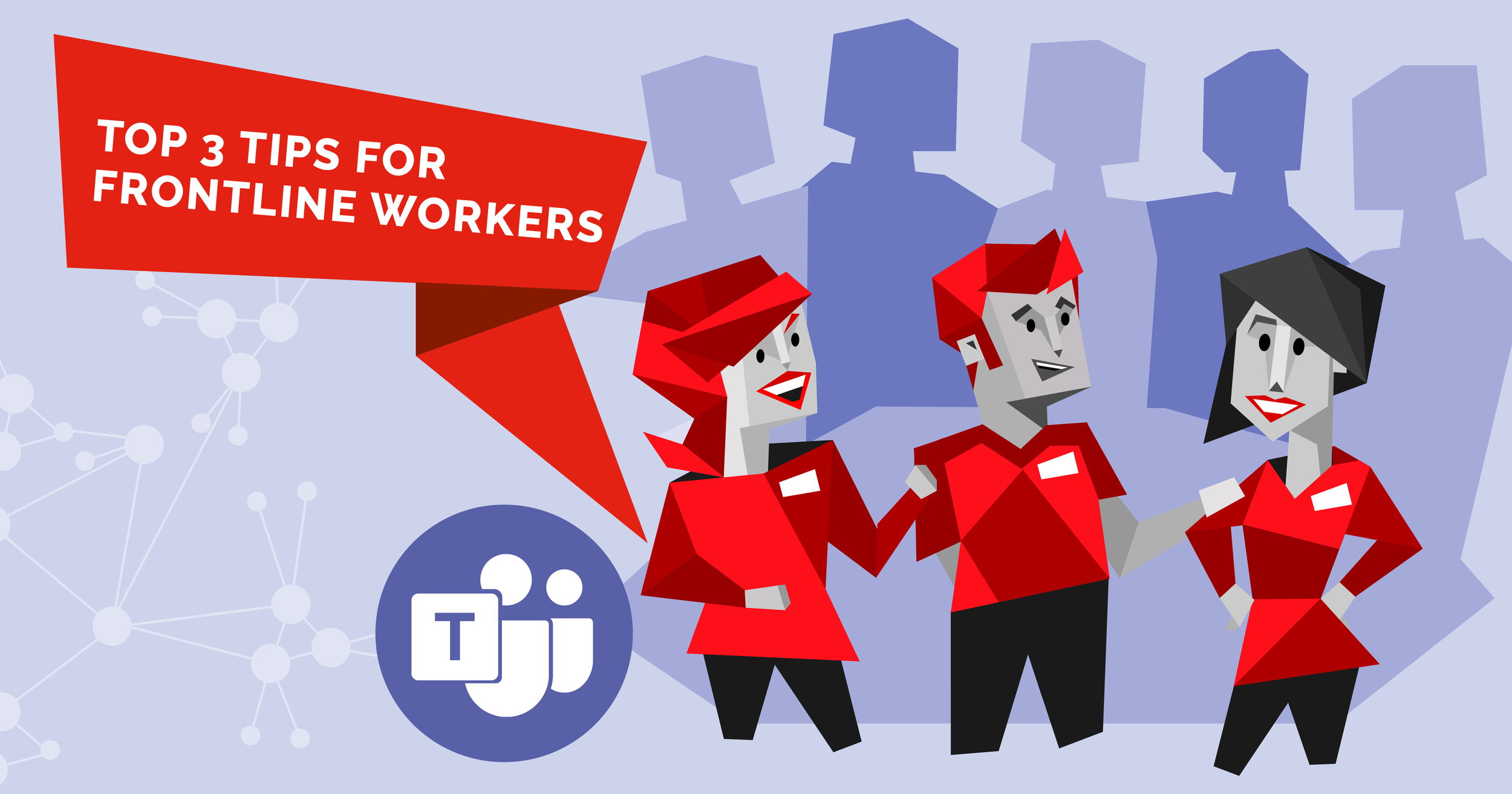Top 3 tips to use Microsoft Teams for Frontline Workers
Use threaded conversations for shift workers and handovers
Jaap Linssen, founding partner at consulting company OrangeTrail, worked with a multi-national beverage manufacturer to help it adopt Microsoft Teams for on-site factory workers.
Prior to the introduction of Teams, the drinks manufacturer had a complicated system where every worker had to go into Sharepoint to log issues from their shift. The reality was, no one used it, and workers instead literally used sticky notes to pass on information about issues to the next shift. Jaap said they would stick notes on computer monitors or machinery to advise of problems or issues. This became a problem in itself because the steam coming off barrels meant the sticky notes would sometimes fly away and not be seen.
OrangeTrail helped the company create a thread in a Microsoft Teams channel for each shift. As issues arose during the shift, a message was recorded in the thread and the thread was continually updated throughout the shift.
“Then when people were still at home, or in the bathroom, or they got through their shift, they would look on their mobile at that thread and they would be aware of everything that was happening,” Jaap said.
It didn’t take long for the workers to start taking photos of broken parts, or take a quick video, and upload them to the thread. In fact, Jaap said some employees preferred to take a video on their phone and speak to the issue rather than having to type it into the thread.
“They would say; ‘This is broken’ and take a picture or make a video and then they started to bring in the maintenance people to the thread, so the maintenance people could also see the pictures and the conversation about it and get the right parts,” Jaap said.
“This is all done on Teams.”
Jaap said it took time to convince employees to download the Teams app on their phone, because the sticky notes were easy. Once they were convinced, it soon changed the way the beverage manufacturer operated on a daily basis and resulted in higher productivity.
2. Frame messages for the frontline
For many organisations your frontline workers are the face of your company. The nature of their work means there’s often little time to be checking in on Teams. Messages need to be succinct, appealing and accessible on mobile devices. Pitch messages in a way that is relevant to your frontline workers, not to those sitting in an office.
“Like we do mobile first, do frontline first,” said Matt Dodd, Digital Workplace Consultant at Engage Squared.
“Have you framed your messaging and content, and group creation, around frontline and not around hierarchies set up for office-based workers?”
Byron Whitt, Director of Technology Services at ROI Communication, says mobile accessibility is key for frontline workers, so think about what messages will look like and leverage content and accessibility around the Teams app. Make use of video as well.
“For frontline workers it’s all about brevity and meeting them where they are,” Byron said.
“That means writing your content and your posts in easy, digestible, snackable nuggets. The power of video is really great and personal when you’re talking with folks who are taking time out of their personal life to do some work business for you. So be conscious of that.”
3. Trust frontline workers
Give frontline workers access to Teams and trust them with the tool. Don’t shut down the majority of functions. Allow frontline workers to use the functions on Teams and see what they can achieve. Tread cautiously though - you must make Teams appealing, not overwhelming.
“It demonstrates a level of trust that you give workers the tools and start from that position of trust rather than a position of closing everything down,” said Matt Dodd.
“Until you put it in their hands, you don’t know what value you’re going to get from that so you have to do it from a position of trust.”
At the same time, Richard Acreman from WM Reply, says it’s important to tailor Teams to the frontline audience, so make the experience customisable to appeal to frontline workers. If necessary, reduce Teams notifications.
Getting frontline workers onto Teams means every person in the organisation can become an active contributor to the conversation. Jarom Reid, Founder and CEO of Carpool, says it’s an opportunity for frontline workers to stand out and show their worth to the whole community.
He used the example of a multi-national clothing retailer he was working with. Stores in the US with high sales took photos of the mannequins wearing their top selling products and sharing them on Teams to allow stores with poor sales to copy. It resulted in higher sales in those previously poor performing stores.
“If a frontline worker wants to progress in their job, you’ve usually only got up to go, you want to be able to show what you do well, “Jarom said.
“If you can do that in a digital environment, your value is increased. It’s not only great for the company but gives you a digital footprint that can be analysed by HR which will help with you progression in the company.”
Thank you to SWOOP’s partners for sharing their expert advice on Teams usage. For this research, SWOOP Analytics interviewed:
Jaap Linssen, Founding Partner, OrangeTrail.
Jarom Reid, Founder and CEO, Carpool.
Richard Acreman, Partner, WM Reply.
Byron Whitt, Director of Technology Services, ROI Communication.
Matt Dodd, Digital Workplace Consultant, Engage Squared.
Learn how to get the most from Teams by downloading SWOOP Analytics’ 2021 Microsoft Teams Benchmarking Report.




